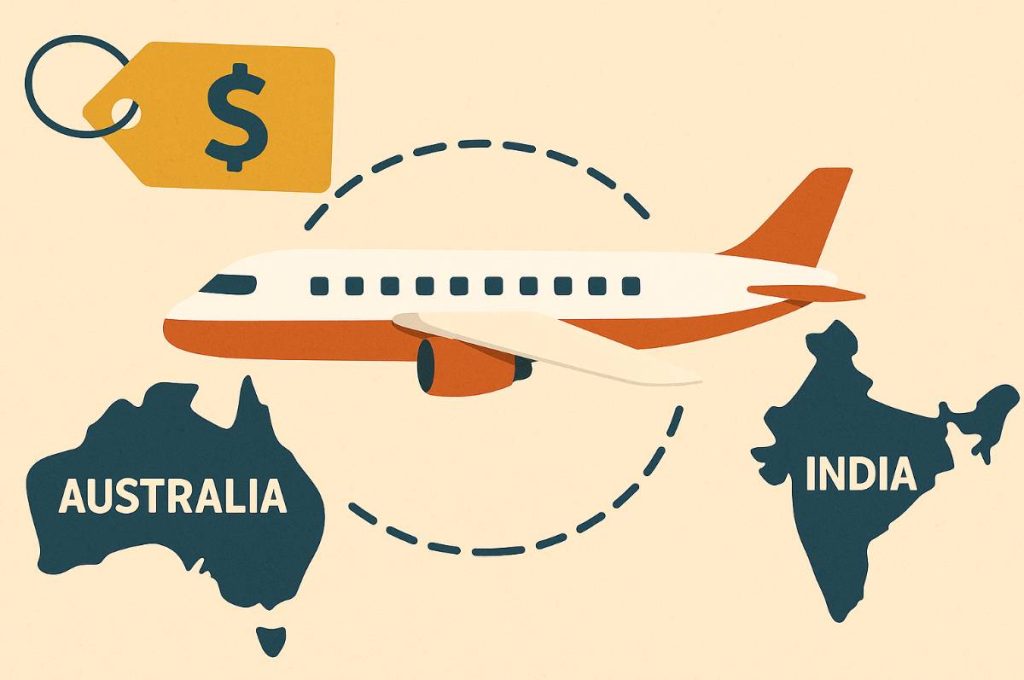Scoring cheap tickets for long flights like Australia to India feels like a victory. But it’s not luck. Knowing the right tactics and timing makes a big difference, and a bit of flexibility will save you serious cash.
Let’s break down how to do it, no jargon, no guessing, just real strategies.
Flexible Dates Mean Cheaper Fares
The top tip? Move your travel dates around.
Fares change a ton depending on the day of the week or the week itself. Shifting your departure by a couple days can save a few hundred dollars. Use price calendars on sites like Google Flights or Skyscanner. Pick the cheapest days. Usually, a midweek departure and return gives you the best deals.
Book at the Right Time
If you plan to fly in 2026, the best window to book is about three to six months ahead. If you are traveling during holidays or festival seasons, closer to six months is safer.
Outside peak times, you can snag deals later, but do not wait until the last minute if you have a set itinerary.
Best Cities for Stopovers
Flight routes are not all equal. Some connecting hubs almost always offer better prices. Here are three options:
- Singapore or Kuala Lumpur: Great for finding deals with low-cost Asian carriers. Try splitting your booking for extra savings.
- Doha or Dubai: Middle Eastern carriers often compete on price, especially in economy class.
- Bangkok: Another common transit city where switching to an Indian carrier can be cheaper for your final leg.
Experiment with these hubs in your flight search. Swapping out a city can mean hundreds less on your ticket.
Flexibility and smart timing unlock the best flight deals between Australia and India for travelers.
Embrace the Shoulder Season
Avoid the rush. In India, traveling during shoulder season months, like April to May or September to October, keeps fares lower and crowds lighter.
These times also provide more options for airlines and seats because planes are not as full.
One Route or Many? Multi-City vs One Ticket
You might wonder, is it better to buy one single ticket or separate each leg?
- One ticket keeps it simple and protects you if there’s a delay. You check your bags once and relax.
- Separate tickets can offer bigger savings, especially via cities with lots of connections. Just remember, you are on your own if you miss a leg, and you may need to recheck baggage.
Check both ways on flight search sites before booking. Direct isn’t always the cheapest.
Baggage and Hidden Fees
That budget fare might not be such a deal if you pay a lot for bags. Before you buy, check whether checked baggage is included.
Sometimes spending a touch more upfront saves more than adding extra luggage later. Double-check all details before you hit purchase.
Make Alerts Work For You
You do not have to monitor prices 24-7. Set up price alerts on Google Flights or Skyscanner. They send you updates when fares drop. This keeps you ahead of surprise sales and flash deals. Try browsing in Incognito or Private mode so your searches do not nudge prices up.
A Sydney to Amritsar Fare Example
Let’s put this into practice.
Maybe you want to see family, eat street food, or just experience Punjab. You search for Sydney to Amritsar in May and see fares between $900 and $2000.
If you are flexible, you spot a connecting route via Singapore or Kuala Lumpur for much less. Maybe the trade-off is a longer layover, but that extra time could mean a savings of a few hundred bucks.
Tools like this let you track all the options and carriers, so when it is finally time to book Punjab flights now, you’ll know for sure you got a great deal.
Tech Tips, Translated
- Set alerts and keep an eye on the price calendar.
- Mix and match hub cities for bigger savings.
- Check multi-city (one-ticket) against piecing it together.
- Always review baggage policies.
When it comes to air travel, the smartest move is flexibility.
Find the strategy that fits, check your options, and next time you see a low fare, you will know exactly when to book, and brag about your score later.





